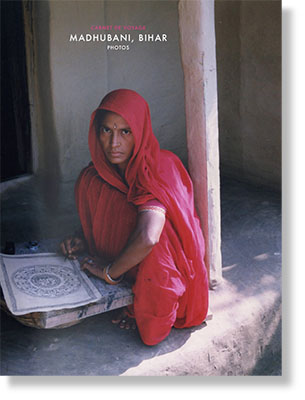Source Scroll In by Luis Dias
Stravinsky, especially after the scandalous 1913 Paris premiere of his revolutionary ballet Le Sacre du Printemps (The Rite of Spring) was labelled the “enfant terrible” of classical music of his time. The famous auction house Christie’s called Souza the “enfant terrible” of Modern Indian art. The enduring formative impression of Roman Catholicism in Souza’s Goan childhood on his art is well-documented. Yashodhara Dalmia, in the chapter A Passion for the Human Figure: Francis Newton Souza of the above-mentioned book The Making of Modern Indian Art: The Progressives, quotes him extensively on the subject. Although Stravinsky drifted away in his adult years from the Russian Orthodox Church he had been born into, his homesickness while in Europe drew him back to the faith, “a portable piece of Russia”. An especially moving ceremony at the Basilica of Saint Anthony of Padua in 1926 while on a concert tour made him formally rejoin the Church. A slew of sacred compositions followed, most famously his Symphony of Psalms for chorus and orchestra (1930, rev 1948) and Canticum Sacrum for tenor, baritone, chorus and orchestra (1955). Souza and Stravinsky also had inspirational subject matter (in addition to Christianity, of course) that overlapped. Oedipus Rex, based on Sophocles’ tragedy, was a Stravinsky opera-oratorio (1927). The inspiration for Souza’s 1961 depiction of the tragic king was (as he himself explained) his own irrational feeling of guilt that his father died soon after his birth, and the disturbing revelation of surreptitiously watching his mother bathe through a hole he bored in the door. Imagine what Freud (Sigmund, not Lucian) would have made of that! It certainly puts his obsession with the female anatomy in perspective.
> read more
CONTEMPORARY ONE WORD SEVERAL WORLDS
dimanche 26 mai 2024
dimanche 19 mai 2024
Soaring graph of Nasreen Mohamedi, abstractionist par excellence
Souce BizzBuzz News by Archana Khare-Ghose
With some superlative auction results for Indian modern and contemporary art in the first four months of this year, the art market is looking good, healthier than before, and poised for even greater innings once the next bout of auction fever strikes in September-October. There have been several great takeaways from the auctions of Indian modern and contemporary art held by AstaGuru, Christie’s, Pundole’s, Saffronart, and Sotheby’s between March and April this year. That has given opportunities to art lovers like me to discover newer talking points and analyse how works of the great masters are progressing over their previous record prices at auctions. In this column this week, I would like to share what I have learnt about the seminal abstractionist Nasreen Mohamedi, whose works are climbing the ladder of popularity at auctions, which is feeding into curiosity about her and her art in what can be called a long overdue attention that she deserved in her lifetime. The biggest hook for this write-up on Mohamedi is the fact that at the recently concluded Pundole’s Fine Art Sale on April 25 in Mumbai, her Untitled work sold for Rs 11 crore, setting the world auction record for the artist. Nasreen Mohamedi (1937-1990), a towering figure among art practitioners, first came into popular limelight when in 2015-2016, two important museums of the world, Museo Nacional Centro de Arte Reina Sofia in Madrid, and the Met Breuer in New York, hosted her solo exhibition, titled ‘Nasreen Mohamedi: Waiting is a Part of Intense Living’.
> read more
With some superlative auction results for Indian modern and contemporary art in the first four months of this year, the art market is looking good, healthier than before, and poised for even greater innings once the next bout of auction fever strikes in September-October. There have been several great takeaways from the auctions of Indian modern and contemporary art held by AstaGuru, Christie’s, Pundole’s, Saffronart, and Sotheby’s between March and April this year. That has given opportunities to art lovers like me to discover newer talking points and analyse how works of the great masters are progressing over their previous record prices at auctions. In this column this week, I would like to share what I have learnt about the seminal abstractionist Nasreen Mohamedi, whose works are climbing the ladder of popularity at auctions, which is feeding into curiosity about her and her art in what can be called a long overdue attention that she deserved in her lifetime. The biggest hook for this write-up on Mohamedi is the fact that at the recently concluded Pundole’s Fine Art Sale on April 25 in Mumbai, her Untitled work sold for Rs 11 crore, setting the world auction record for the artist. Nasreen Mohamedi (1937-1990), a towering figure among art practitioners, first came into popular limelight when in 2015-2016, two important museums of the world, Museo Nacional Centro de Arte Reina Sofia in Madrid, and the Met Breuer in New York, hosted her solo exhibition, titled ‘Nasreen Mohamedi: Waiting is a Part of Intense Living’.
> read more
Inscription à :
Articles (Atom)





















